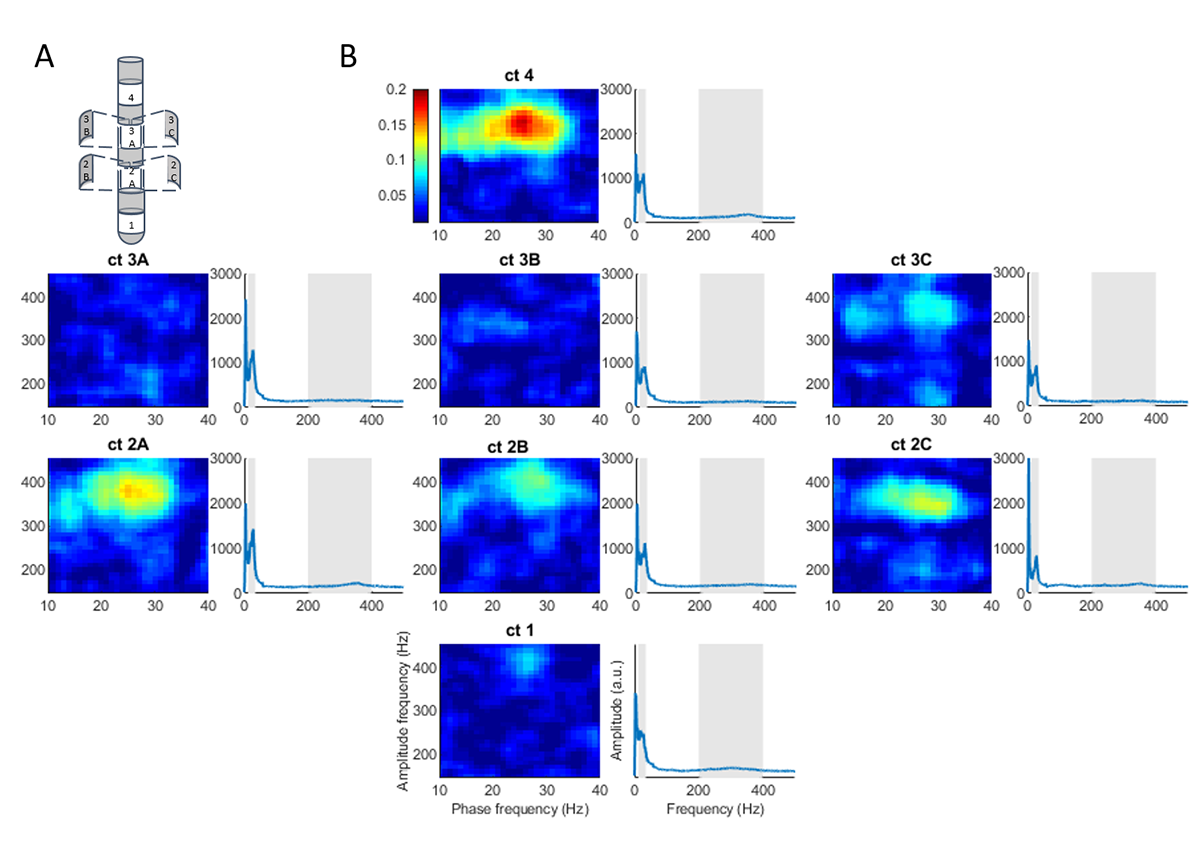Session Information
Date: Tuesday, September 24, 2019
Session Title: Neurophysiology
Session Time: 1:45pm-3:15pm
Location: Les Muses Terrace, Level 3
Objective: To characterize the spatio-spectral patterns of local field potentials (LFPs) in the subthalamic nucleus (STN) recorded from segmented DBS electrodes.
Background: PD patients in the “off” medication state demonstrate increased beta band power at rest in both the STN and the GPi (1). Levodopa intake, and subsequent motor improvement, correlates with decreased beta band power in both the STN and GPi [1]. LFP activity recorded post operatively can serve as a neuro-biomarker to predict the optimal contact for stimulation [2]. Limited additional research has explored the functional use of directional LFPs.
Method: 6 subjects with PD undergoing bilateral STN DBS surgery were recruited. The LFP recordings were made from the segmented DBS macroelectrode (Abbott Infinity leads 6172) using a gHIamp biosignal amplifier (Gtec Inc., Austria) at 2.4 kHz and 24-bit resolution, during periods of rest. LFPs from individual directional contacts were derived by common-average referencing. Synchronized electromyogram and video recordings were obtained in order to identify resting and movement periods. The recorded data was converted to Matlab (Mathworks, Natick MA) format, as described previously [2] for offline analysis using signal processing and spectrum estimation techniques.
Results: LFP data from 12 STN electrodes were successfully obtained and processed. Power-spectral-density maps showed distinct spatial resolution of excessive beta band (13-30Hz) power at rest amongst the 8 contacts on the segmented leads in all patients. The phase of beta activity modulated the amplitude of the co-existent high frequency oscillations (HFOs, 200-400Hz), indicating the presence of beta-HFO cross frequency coupling (CFC), which was also distributed in a distinct spatial manner across the contacts [figure 1].
Conclusion: To our knowledge, this is the first time that beta-HFO CFC has been demonstrated in LFP recordings from directional leads. These preliminary data suggest that beta power or beta-HFO CFC could be used to guide optimal contact selection when directional leads are used. Such findings could improve efficiency of DBS programming. Figure 1: LFP characteristics across directional contacts. (A) Labeling of the individual contacts of the directional lead (Abbott Infinity 6172). (B) CFC (left) and spectra (right) of resting state LFP activity from individual contacts in a representative patient.
References: 1. Brown et al, ‘Dopamine Dependency of Oscillations between Subthalamic Nucleus and Pallidum in Parkinson’s Disease’. J Neurosci 2001, 21(3):1033-1038. 2. Ince et al., ‘Selection of Optimal Programming Contacts Based on Local Field Potential Recordings From Subthalamic Nucleus in Patients With Parkinson’s Disease’. Neurosurgery 2010;67(2):390-7.
To cite this abstract in AMA style:
J. Jimenez-Shahed, M. Ozturk, A. Viswanathan, S. Sheth, N. Ince. Directional lead local field potentials show distinct spatial resolution [abstract]. Mov Disord. 2019; 34 (suppl 2). https://www.mdsabstracts.org/abstract/directional-lead-local-field-potentials-show-distinct-spatial-resolution/. Accessed April 21, 2025.« Back to 2019 International Congress
MDS Abstracts - https://www.mdsabstracts.org/abstract/directional-lead-local-field-potentials-show-distinct-spatial-resolution/

